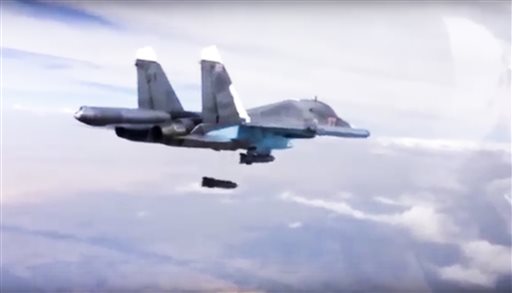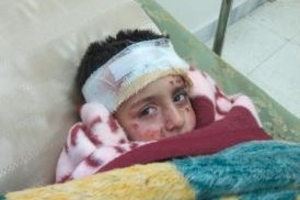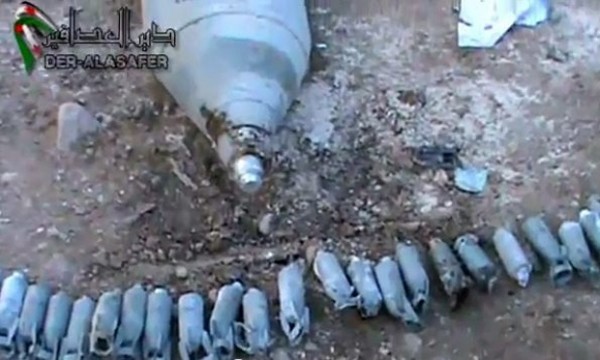
A human rights watchdog on Wednesday accused Russia of using cluster munitions and unguided bombs on civilian areas in Syria in attacks that it says have killed hundreds of people in the past few months.
The report by Amnesty International said there has been a surge in reports of cluster munitions dropped in areas targeted by Russian forces since Moscow formally joined the conflict Sept. 30.
Cluster munitions are by nature indiscriminate and often leave unexploded bomblets on the ground. These can maim and kill civilians long after the cessation of hostilities.
The report focuses on six attacks in Homs, Idlib and Aleppo provinces between September and November which it says killed at least 200 civilians. It denounced Russia’s “shameful failure” to acknowledge civilian killings.
“Some Russian air strikes appear to have directly attacked civilians or civilian objects by striking residential areas with no evident military target and even medical facilities, resulting in deaths and injuries to civilians,” said Philip Luther, director of Amnesty’s Middle East and North Africa program. “Such attacks may amount to war crimes,” he said.
The accusations follow a report by New York-based Human Rights Watch last week which said cluster munitions were used on at least 20 occasions since Syria and Russia began their joint offensive on Sept. 30.

Russian officials have repeatedly rejected such accusations, and residents and opposition activists inside Syria acknowledge they have no way of knowing for sure whether the attacks are carried out by Russia or the Syrian military.
When asked Monday about allegations that Russia is using cluster bombs, Russian President Vladimir Putin’s spokesman Dmitry Peskov said the Russian military in Syria operates in line with international law.
“Russia is conducting its operation in strict conformity with principles and norms of the international law, including those sections of the international law that regulate using and bans on using one or another type of weapons,” Peskov told reporters.

Russia says its airstrikes are aimed at the Islamic State group and other “terrorists,” but Western officials and Syrian rebels say most of the strikes have focused on central and northern Syria, where IS does not have a strong presence.
ASSOCIATED PRESS

Leave a Reply
You must be logged in to post a comment.